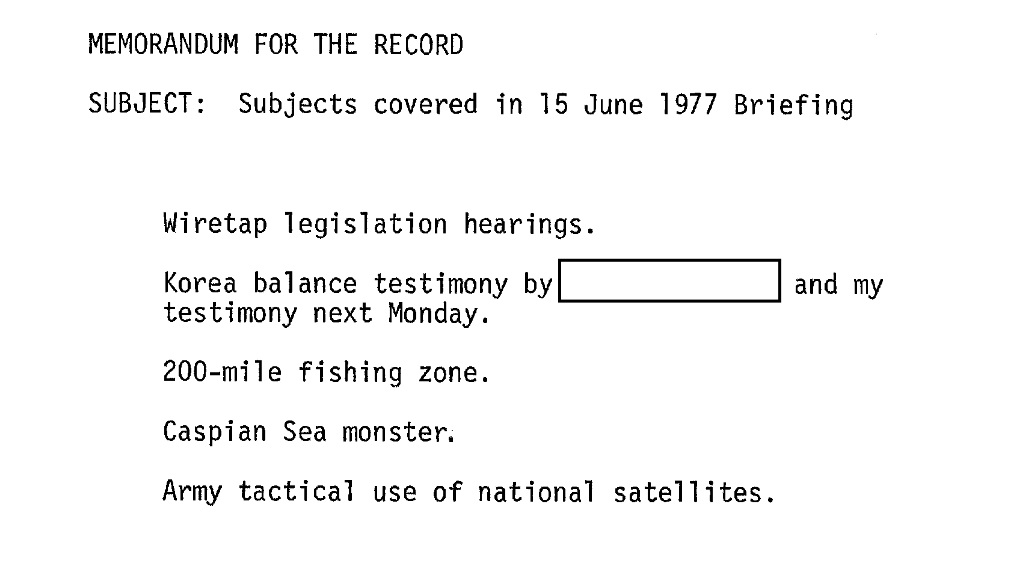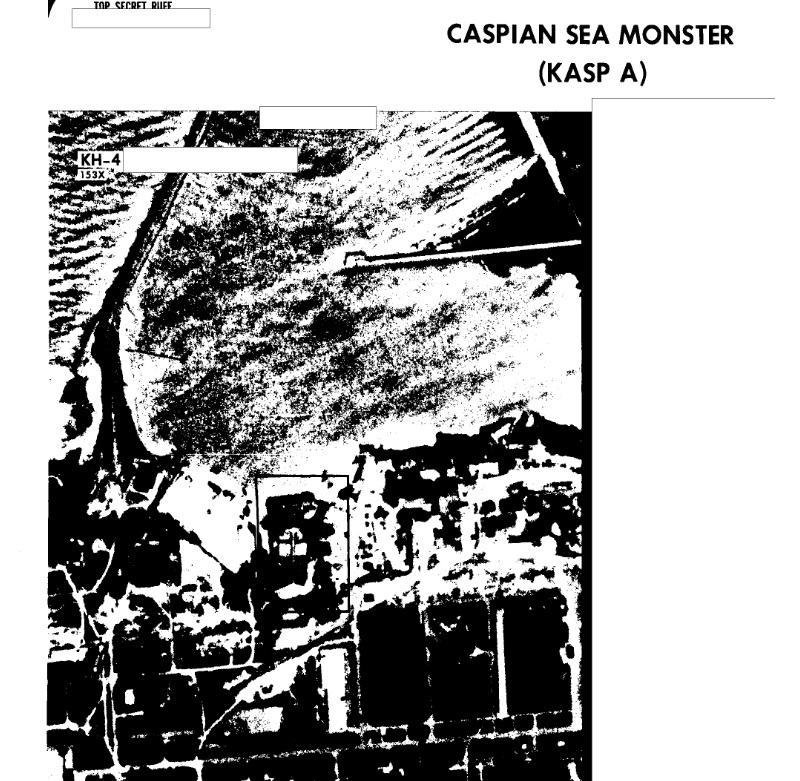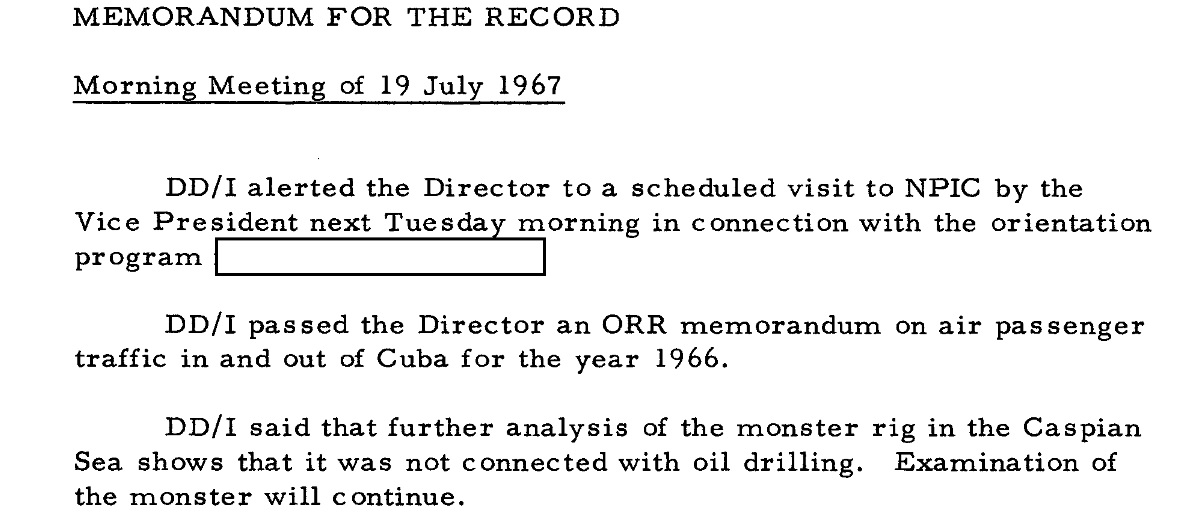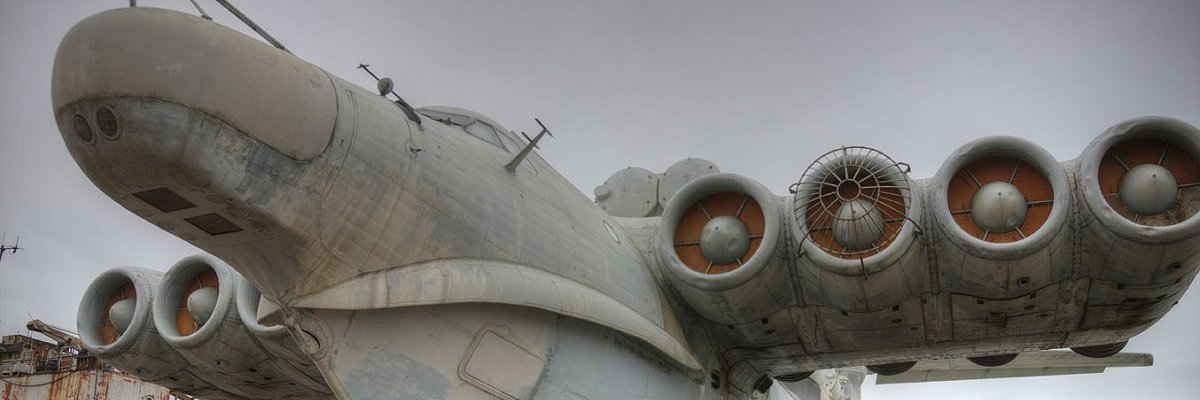A 1977 CIA memo unearthed in CREST summarized a meeting with topics ranging from wiretap legislation, the situation in Korea, international fishing boundaries … and oh yeah, the Caspian Sea Monster.

While it might seem odd that something with “sea monster” in it wouldn’t be the top story of the day - or at least get billing over fishing zones - at this point, the Caspian Sea Monster, or KM (the Russian initials for “Experimental Craft”), had been well-known to the Bureau for a decade. The KM was first discovered in 1967 when U-2 spy plane imagery picked up a massive … something.

Initially, due to its size, the CIA first thought KM might be a rig or platform.

However, continuing reconnaissance determined that it was actually some sort of humongous “aircraft-like vehicle.”

In reality, the KM had less in common with a 747 than it did with a hydrofoil - as noted in a 1979 report on the Soviet’s amphibious forces, the KM was a prototype of the “ekranoplan” ground effect vehicle, or WIG, designed to be flown as close to the surface as possible for maximum efficiency. And clearly, it worked - despite the KM’s 300-foot length and estimated 500,000 pound weight while empty, it was reportedly capable of reaching speeds of over 400 miles an hour.

Alas, the KM was not not long for this world. Just one year after the report, the KM crashed into the Caspian due to pilot error and was unable to be retrieved due to how incredibly big and heavy it was.
But our monster’s death was not in vain - KM’s designs led to the development of the Lun-class ekranoplan, just one of which was built, and which was in service by the Russian Navy into the late ’90s. And while we don’t have a U-2 handy, you can see it drydocked thanks to Google Maps and check out photos of it here.
Image via Igor




